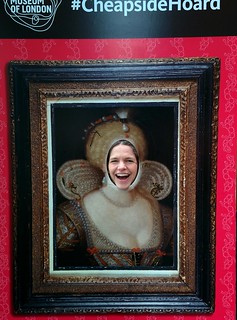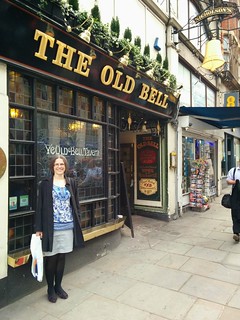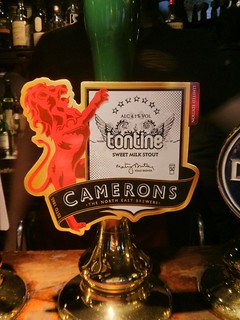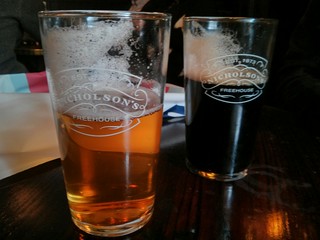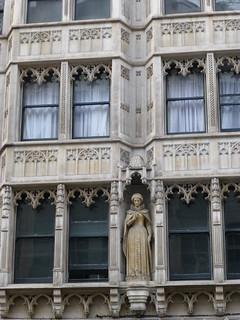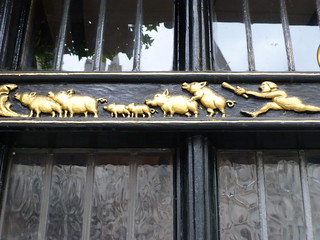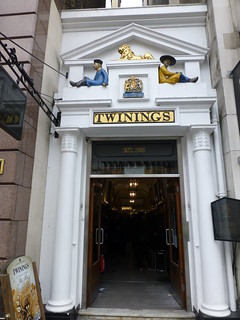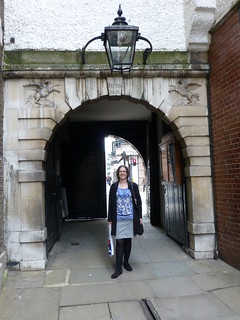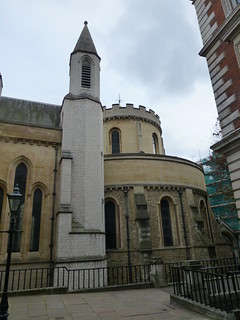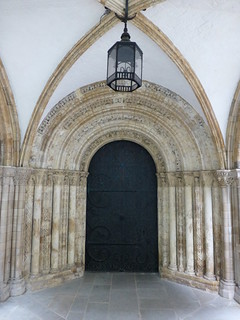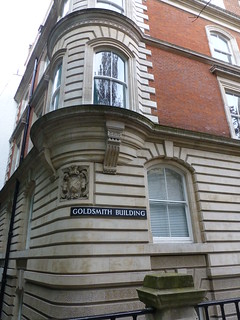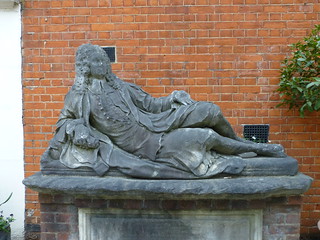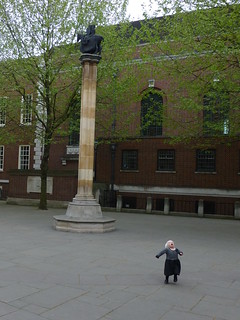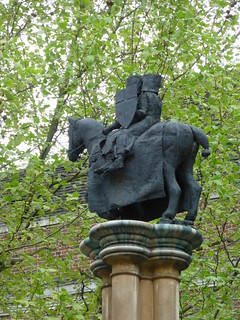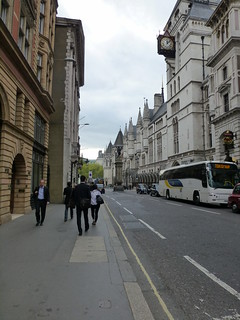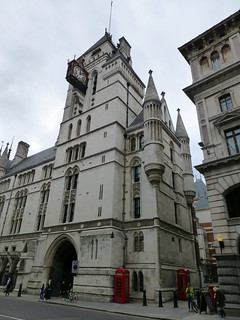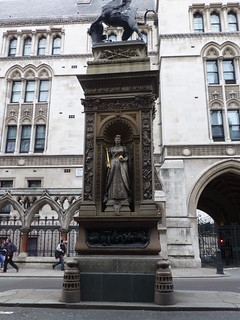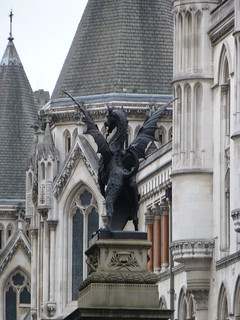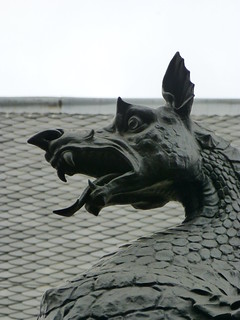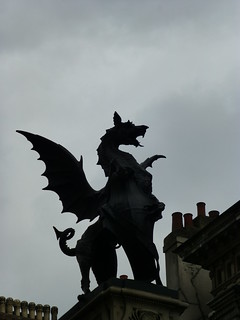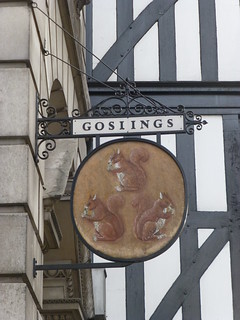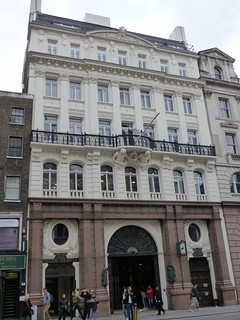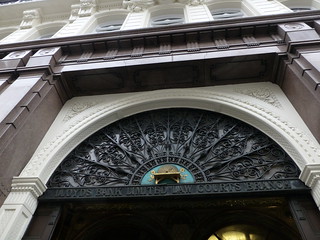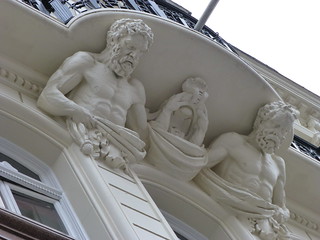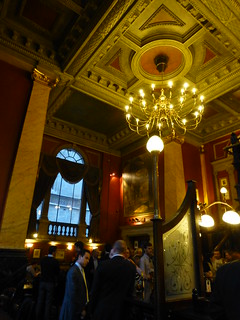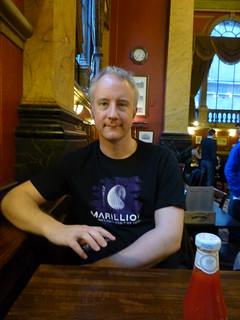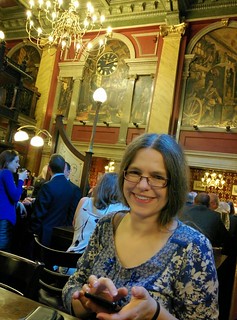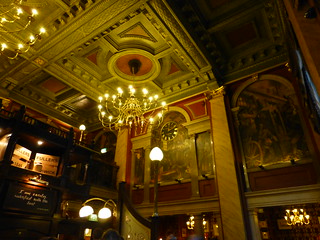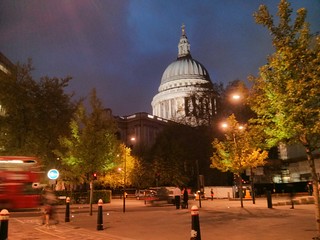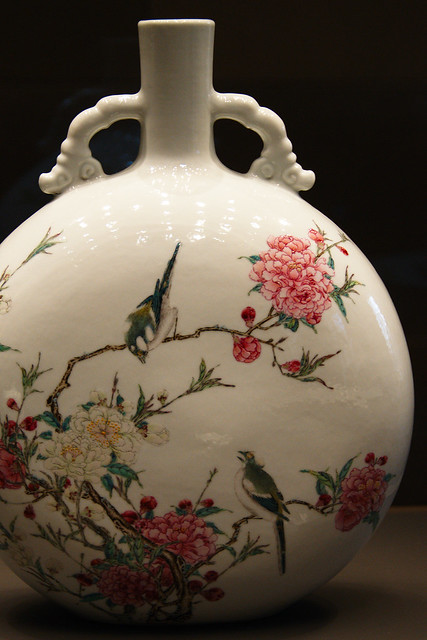The Plantagenets; Return of the Black Death: Secret History
The Plantagenets was a three part series about this dynasty of English monarchs presented by Robert Bartlett. He points out that this is the longest running dynasty of English kings, which I hadn’t realised – they stretch from Henry II (who takes the throne in 1154) right the way through to Richard III (who dies in battle in 1485). Bartlett covered them in chronological fashion, conveying some feel for the politics of the time and for the dysfunctional soap opera-like personalities and family relationships of the Plantagenets.
The first episode pretty much covered the context and then the first two generations of Plantagenets. Henry II actually ruled over a fairly large empire including not just England but quite a lot of what’s now France, which he’d acquired via inheritance and marriage. This part of the family is one of the more soap opera like bits – Bartlett explained the various rebellions against Henry by his own sons and even his wife. It wasn’t all internal family bickering however – this is also the time of Thomas Beckett and his murder after he fell out with Henry. The bickering and power struggles don’t stop after Henry’s death either. Richard the Lionheart rules England mostly in absentia and via first his mother then his younger brother John, with varying degrees of success. John succeeds Richard in a somewhat dubious fashion (a nephew, Arthur of Brittany, had a better claim but eventually meets with an “accident” in custody). John is also notable for annoying most of the aristocracy (this is the time of the Magna Carta) and for losing the bulk of the dynasty’s French lands.
The second episode covered the same era that my current non-fiction book is covering – from Henry III through to Edward III. But definitely aimed at a different audience in that Prestwich’s book is fairly dry and focused on the details and nittygritty of the politics, but Bartlett is pitching the TV series more towards the broad picture end of the spectrum. The focus of this era is shifting from the very French focus of the first part of the dynasty to a more English identity. Largely out of necessity, as John had lost most of the French lands. Conflicts between King & nobles in this time lead to the formation of Parliament as a key player in government. And the English Kings also start to look to the rest of the British Isles to satisfy their empire building tendencies – Edward I’s conquest of Wales, and the repeated attempts to control Scotland.
The third episode Bartlett called “The Death of Kings” – this is the decline of the Plantagenet dynasty into particularly bloody disaster. We start with Richard II, who was a great believer in the divine right of Kings and rather predictably alienated the aristocracy with this belief. He was deposed by a cousin of his – and was starved to death in custody. Bartlett positioned this as the first precedent of the deposition and killing of an anointed King, and thus the beginning of the end for the dynasty. I’d quibble, in that I’d see the deposition of Edward II as the first time that had happened in the Plantagenet dynasty – prior to that (like when Henry III lost a civil war) the King always remained King just not powerful in practice. But J pointed out that Bartlett was maybe drawing a distinction between being deposed in the name of your heir (ie Edward II -> Edward III) and being deposed by a relative who wouldn’t otherwise inherit. It does, at first, seem to’ve been a successful gambit by Henry IV and his son Henry V leads the dynasty to a new highpoint. Henry reignited a hot phase of the war with France, and was sufficiently successful to get himself declared the heir. Sadly he dies young (of dysentry) and while his infant son Henry VI does get crowned King in both England and France it isn’t to last – Henry VI isn’t a warrior King, in fact he’s pretty useless as a King at all. Bartlett didn’t have much time left in this programme to cover the Wars of the Roses in detail, instead focusing on the human side of it and getting us quickly to Richard III and the end of the Plantagenets.
I enjoyed this series – we’ve seen a few series Bartlett has presented and they’re always both entertaining and informative. It was slightly odd watching it at a point where I’ve recently read a much more detailed account of part of it because I did find myself thinking “well, yes, but what about …” rather more often than I would normally.
Keeping with the same general historical era we also watched Return of the Black Death: Secret History this week. This was right on the edge between interesting and irritatingly shallow. The most irritating bit was that before each ad break they did a little sequence of empty streets of modern London with a sinister figure standing on a rooftop and whispering the names of the dead. Once would’ve been OK, but over and over just felt like padding on an already pretty shallow programme.
The jumping off point for the programme was the excavation of some victims of the 1349 Black Death epidemic in London during the construction of Crossrail. They then talked about the extent of the epidemic, why we now think so many people died and what lessons we can learn in the modern era from this disaster. The programme showcased one historian’s research into the Wills of London merchants and tradespeople of the time – he’d used these to extrapolate to get a figure for the number dead. As presented on the programme it seemed somewhat of a stretch, so I rather hope that this was simplified too far! One bit of gimmickry that was actually very effective was that they staged readings of some of these Wills by people who looked like modern versions of the beneficiary of the will – like a teenage girl whose parents had both died within a month of each other. It was tastefully done and did humanise the data. They did some other chronicles and texts in a similar style, which was also effective.
The estimate they used was that 60% of the London population at the time died, and they all died within a few months. Londoners at the time were likely to be particularly vulnerable to disease because there had been a period of poor weather and bad harvests. But from talking to modern disease experts this is too fast for normal bubonic plague to spread and kill even taking that into account, so at first it was assumed this was a particular mutant form of the disease. However the skeletons that were dug up still had the disease present in their teeth, which meant that it could be sequenced and compared to the modern form. Surprisingly they were identical. The explanation was illustrated using some cases of plague from the early 20th Century in Shotley (near Felixstowe) – this too spread quickly and killed fast, and it’s known that this was a pneumonic form of the plague. The standard infection is spread by rats and their fleas, but if an infected person develops the pneumonic form then it is easily transferred from person to person – same disease, just a different place of infection and mechanism of spread. So this is likely what devastated London in 1349.
As well as using a modern example to look for explanations for the rapid spread, they also talked about how Edward III’s government’s response was not that far off a modern idea of how to handle things. Apart from the lack of good medical knowledge, of course. The particular example was that a cemetery was set aside for victims and steps taken to ensure the dead were buried rapidly but with proper ceremony. The expert from Porton Down talked about how this is necessary to keep morale up in the survivors, and indicated there are similar sorts of plans drawn up in case of disaster today.
Overall, a bit shallow and gimmicky but presented some interesting perspectives.
Other TV watched this week:
Episode 2 of Monkey Planet – series about the biology and behaviour of primates.
Episode 7 of The First World War – a 10 part series covering the whole of the war.
Episode 5 of Pagans & Pilgrims – series about the sacred places of Britain, presented by Ifor ap Glyn.
Britpop at the BBC – nostaglia programme about Britpop, using footage filmed by the BBC, mostly for Top of the Pops.
In Our Time: The Phoenicians
The Phoenicians were a culture whose origins were in what is now Lebanon, and who lived there in the Bronze Age (roughly speaking). Interestingly for a culture who were the originators of the alphabet that became the Greek alphabet we actually don’t know much about them from their own records. Discussing what we know about them (mostly from other sources) on In Our Time were Mark Woolmer (Durham University), Josephine Quinn (University of Oxford) and Cyprian Broodbank (University College London).
We don’t even know the Phoenicians own name for themselves – in fact it’s very likely that they didn’t think of themselves as a cohesive group, instead they were a collection of city states (much like Greece in Classical times). The word “Phoenician” is a Greek word, and was used by the Greeks to name the Phoenicians – but the Greeks themselves weren’t entirely sure why, or what quite it meant. Classical Greek writers speculate that it is derived from the word for “purple” and that this probably referred to the murex snail purple dye that the Phoenicians produced and traded. The writings that the Phoenicians themselves left are fairly limited in scope – some bureaucratic documents, some letters and an awful lot of copies of a particular formula of dedication to the gods which is found in many temples across the Mediterranean area.
The Phoenicians were known as sea traders (and sometimes raiders) – and not only is that reminiscent of the Vikings, but also why they became a seafaring nation is also similar. As with Scandinavia Lebanon consists of a relatively narrow strip of fertile land bordered on one side by the sea, and on the other by mountains. The most abundant resource of the region is trees (the cedars of Lebanon) and this was useful both for building their own ships, and as trade goods to other peoples around the Mediterranean.
One source for the Phoenicians is the Hebrew bible – and what I either didn’t know before or had forgotten is that the Phoenicians are the Canaanites of the Bible. They discussed how the Bible presents the Canaanites as rich traders who Solomon goes to for resources to build the Temple. Although the details may be wrong (it’s unclear when this bit was actually written, for instance) they considered it likely that the overall flavour of the episode is correct. Tyre (one of the Phoenician city states) is also mentioned in some of the prophecies (I think in Isaiah?) – it’s prophesied that it will be one of several cities to fall, but Tyre is the only one of the set that is universally mourned. Not, the experts said, because it was well loved per se but because it was an important hub in the economics of the region.
There’s also archaeological evidence of this Phoenician culture going back to at least the Amarna period of Egyptian history (i.e. c.1350BC) and probably before. Some of the Amarna letters are from Phoenician city states asking Pharaoh for help with taking their neighbours down a peg or two. Because of where the Phoenicians lived their city states were often squeezed between the superpowers of the day. At times they were under Egyptian control, at other times under control of whatever Mesopotamian culture was currently ruling that part of the world. Their shipbuilding skills, and trading network, meant that they were generally regarded as a valuable asset to whichever empire was claiming them – for instance one of the Persian leaders regarded a Phoenician warship as the best way to travel if he needed to go to sea (I want to say that was Cyrus, but I can’t quite remember if that’s the case).
As well as their core cities in modern-day Lebanon the Phoenicians settled colonies right around the Mediterranean. The most famous of these is Carthage, but there’s archaeological evidence for a lot of others (including Cádiz in Spain which has been continuously inhabited since being settled by the Phoenicians). The colonies generally started out as a simple trading post for a particular mother city to trade with a particular region but some then grew into cities in their own right. They made use of natural geography to make these cities defensible and seperate from the host culture – often on an island just off the coast, or a peninsula.
Quinn explained that the Phoenicians didn’t leave us any literature – which is particularly odd given that pretty much all the other cultures around them at the same time period did. She said there were a couple of possibilities – one is that we just haven’t found it yet. Many Phoenician cities are still inhabited so it’s pretty hard to do comprehensive excavations. The other (which I think was her preferred answer) is that maybe they just didn’t write that sort of stuff down, that they just used writing for the sorts of bureaucratic things we’ve found.
There were a couple of things in the programme that Bragg had clearly decided in advance were “must include” things, but then ended up feeling a little shoehorned into the programme. One of these was child sacrifice, which the Phoenicians were said to do. This was covered particularly abruptly, but I think the take home message was that whilst it probably happened occasionally across the Phoenician culture the biggest evidence for it happening is only in Carthage. And this evidence is a large number of infant burials at an age (1-2months) when they’re a little too old to’ve died from complications of their births. The experts speculated that this was perhaps a way that Carthage was separating its identity from that of its mother city – but in the absence of written records it’s pretty much impossible to know why (or indeed be totally sure if) they did it.
The other thing that Bragg particularly wanted to include was to talk about the Phoenician development of the alphabet and why this was important – but sadly this segment of the programme seemed a little muddled. Herodotus the Greek historian credits the Phoenicians with teaching the Greeks the alphabet, which seemed a plausible story to the experts. I was a little surprised they didn’t mention Linear B at this point – because it’s written Greek in a different alphabet, and it’s interesting that the Greeks seem to’ve learnt to write twice (after forgetting in between). I don’t think Bragg got quite what he wanted out of this section as when he was asking for the experts to explain what was so special about an alphabet he got more of an explanation of why writing is useful for a large widespread trading network.
Even with the muddled bits it was an interesting programme – I hadn’t realised how little is directly known about the Phoenicians. And I was interested by the comparison with the Vikings, having been thinking about them recently due to the British Museum exhibition.
A Wander Around a Little Bit of London
When we go to London we’ve normally got a plan – going here to see this, then there to see that etc. But last Thursday we left ourselves some time just to wander about a bit, taking photos of the things that caught our eyes. This post consists of a selection of those photos – J took the ones with me in fairly obviously!) and they’re from a variety of cameras (both phones, the Lumix but not my DSLR as I didn’t have it with me). As always, click on a photo to see the larger version on flickr 🙂
The main point of the trip was to see the Cheapside Hoard Exhibition (post) so we started at the Museum of London:
Afterwards we walked back down to St Paul’s before having a drink in The Old Bell at the start of Fleet Street – built by Christopher Wren to house his masons before it became a pub. J had a pint of stout from a northeastern brewery we hadn’t run across before!
We then strolled along Fleet Street towards the Strand looking at the buildings. I wasn’t quite sure what Mary Queen of Scots was doing on the facade of one of the buildings (tho she was near the building for the Dundee Courier etc, so there was a Scottish theme).
We saw a sign pointing through a gate and followed it to discover Temple Church (famous for being round, and for being for the Templars) – not open but we had a look around the outside, including a sneaky snap of a ceiling in one of the buildings near the gate! (And one of the buildings was called Goldsmith Building, which seemed thematically appropriate for the day!).
As we approached the Temple Bar Marker (there used to be a gate here between the City of London and Westminster) the Royal Courts of Justice were very definitely what caught the eye – quite the impressive building. And the marker itself is rather fine – quite Victorian in style, with a dragon on top.
The banks round here have a bit more history than you usually think of when you think of the big name banks. The Barclays branch used to be Goslings Bank, with a sign of three squirrels. And the Law Courts branch of Lloyds has a rather fine building and quite the spectacular cash machine lobby!
By this point it was time for dinner. We caught sight of a pub that was offering pie & ale and decided that hit the spot. This wasn’t just in the Old Bank of England (the Law Courts branch rather than the HQ) but also in a spot between where Sweeny Todd butcheredbarbered and the associated pie shop. The food was pleasant, but rather small portions and I felt the price was down to the location & decor not the meal itself – it was very nice inside tho:
After dinner we walked back to the train station, past St Paul’s again (which looked rather fine all lit up) and along Cheapside. A good day out 🙂
The Cheapside Hoard: London’s Lost Jewels (Exhibition at the Museum of London)
Last week we went into London to visit the exhibition at the Museum of London of the Cheapside Hoard before it closes on 27th April. The first thing that struck us, before we even got into the exhibition, was just how much security there was – the entrance to the exhibition was secured with great big turnstiles, security was provided by the Ghurka Security Services (who seem from a quick google to be made up mostly of ex-Ghurka soldiers) who lurked in the shadows throughout the exhibition. And not only could you not take photos in there, you also couldn’t take in coats or bags. I guess this is all because the jewellery of the hoard is valuable not just for the historical interest, but also inherently due to being made up of gold and jewels.
The exhibition opened with a little bit about the discovery of the hoard – it was found in 1912 when workmen were demolishing some 17th Century buildings. There were cellars under these buildings from the original buildings that had been there before the Great Fire of London, and the jewellery itself was found beneath the floor of one of these cellars. So this indicates it was buried before the fire, so pre-1666. Later in the exhibition they pointed out that one of the items must date to after 1640 (due to having a coat of arms on it that didn’t exist before that). So there’s a fairly narrow range of dates for when it was buried: 1640-1666. At the end of the exhibition there was a short section on why the hoard might’ve been buried but although they try and suggest possibilities, really no-one knows. All that’s known is that at that time the houses on Cheapside were occupied by jewellers, and that period of time is a fairly turbulent time in the history of London.
The first third of the exhibition provided context for the jewellery, which occupied the remaining two thirds of the space. We were shown what London was like during the time that the jewellery was fashionable – so Elizabethan and early Stuart era. Something that particularly struck me in this section were the shop and house signs. In London at the time houses weren’t numbered, instead people hung carved wooden signs from the wall. In the exhibition they had (amongst others) a Black Boy and a leopard. These are the forerunners of pub signs, I guess – actual carvings rather than painted signs tho. Other highlights included a mockup of a jeweller’s workshop – most of the houses on Cheapside were occupied by jewellers or goldsmiths during this time period. The two terms were used fairly interchangeably at the time, but were beginning to separate (and people were beginning to specialise in a particular part of the goldsmithing trade rather than necessarily being all-rounders). I was also much taken with the chests they had on display – in particular an enamelled one that was as much a work of art as any jewellery it might once’ve contained.
The jewellery itself was very impressive. This is the first time in a hundred years that the whole lot has been on display at once, and there’s really quite a lot of it (it’s a shame I don’t have a photo at this point, it’s hard to give an impression of the scale of it in words). The first things you see as you come into that section of the exhibition were some of my favourites – a collection of long delicate chain necklaces made up of enamelled flower and leaf motifs. The exhibition provides one with a magnifying glass so you can properly look at these, and it’s astonishing to think they were made by people working with less high quality lenses for magnification and using only natural light. There are also rather fine jewelled pendants, large jewelled earrings, a selection of rings. And some rather fascinating fan holders – these are about the same size as the pendants, and covered in jewels. It took me a little while to figure out how they worked – but after peering at the objects and the picture of someone with a fan I think I worked it out. The fans were ostrich feathers (or something like that) and these stuck into an opening in the broader end of the holder. They were displayed with that opening downwards, which confused me at first!
After the cases of “all the things of type X” they had a large selection of unique items. Most of these were cameos, including some that were ancient but set in Elizabethan fashion. I must confess I didn’t spend much time looking at these (although I did look at all of them) as I don’t find them as interesting as the other things. However there were also some other unique items that stood out. In particular there was a watch set in an emerald, which is taking ostentatious display of wealth to extremes! The label for this pointed out that emeralds are particularly tricky for this sort of item, as they are prone to cracking, so this wasn’t just inherently expensive it was also hard to make. I also liked a little salamander brooch with the body made up of several oval emeralds. And J liked a small pendant carved in the shape of a squirrel. Another highlight of this section was an exquisite scent bottle. And they had had a modern perfumer make up a perfume inspired by the sorts of ingredients used at the time, and there was a little door in the exhibition wall to open so you could smell it. Rather nice, I thought, but I couldn’t begin to describe it.
As well as the jewellery in this room they also had several portraits around the walls showing people wearing the sorts of jewellery that were on display. Particularly striking was the way that ruffs and hair-dos were used to display the pieces – even rings could be worn attached to a ruff rather than on a finger. The delicate chains I’d been admiring could be worn pinned up on the bodice of a woman’s gown, so they were well displayed and not in danger of catching on things and breaking. There were also video screens around the room showing closeups of the jewellery and something of the techniques used to make them – I wasn’t particularly impressed with these, none of them caught my attention enough to make me want to stop and watch them rather than look at the items themselves.
It’s only on for another few days, but worth a visit if you can get there 🙂
Monday Link Salad
J linked me to a story about this a little while ago but I didn’t properly look at it till just now – Getty Publications Virtual Library is a collection of 250 free art books from the publisher’s backlist available as pdfs. Quite a few things I like the look of in the list 🙂 Related are another couple of collections of books: MetPublications is the MMA’s project to offer their publications online for free (which goes back to 1964 so far I think). And the Guggenheim has put 99 catalogues from modern art exhibitions freely available (not so much my cup of tea).
Another link for a little while ago I forgot to put in last Monday’s post: tigers in the snow.
Here’s a review of a book from 1974 “How to Make Magic” – a children’s book about the occult. It’s really not a book that you would expect to find today (and maybe not then either, but I don’t remember much about 1974 myself 😉 ).
And no new TV to record this week – which is good coz there’s a few series ongoing and we need some time to catch up with how much we’re adding to the box!
Eternal Spring
Mind the Gap: London vs the Rest; Polar Bear: Spy on the Ice
Mind the Gap was a two part series presented by Evan Davis about the growing gap between the economy of London (booming) and the economy of the rest of Britain (somewhat stagnant). I’m not sure he really had 2 hours worth of material, but I guess he wanted to divide it into two themed chunks. The first programme mostly covered what the situation is and how it has arisen. Davis talked to a variety of people – CEOs, workers, people involved in transport, Boris Johnson etc. The take home message was that the gap exists because a gap already existed and it’s just got more pronounced. Basically businesses want to be near other businesses – either of the same type for collaboration (or people poaching) or of different types (again for collaboration). So once London started to be the place to be, it became more the place to be. Davis did spend a bit of time talking about the downsides of this as well – in particular the way people get priced out of the city. And the effects on transport and other infrastructure requirements. Like the fact that Crossrail isn’t even built yet and they’re already planning Crossrail 2 because the projected growth of the city means it’ll be needed that soon.
The second programme was more concerned with what, if anything, can be done to reduce the gap – bringing up the rest of the country rather than bringing down London, obviously. This felt particularly padded, to be honest. Davis’s message here was the he thinks (and this was clearly couched as a personal opinion) that trying to bring the whole of the rest of the country closer to London in economic terms is a non-starter. By spreading the economic growth so thin you don’t ever get momentum going anywhere. Also Davis didn’t seem to think many places had enough there to start off with. His idea was that the best hope for economic growth outside London is to encourage formation of a supercity in the north of England. Statistically speaking if you compare city population sizes between many European countries including Britain then we don’t actually have a “second city” – there’s a far bigger gap between London and the next tier of cities than you’d expect. So Davis thinks that the way forward is for the Liverpool to Leeds corridor to turn into Britain’s second city. I guess Glasgow/Edinburgh wasn’t chosen because it has the issue that it might turn out not to be British shortly.
Overall I wasn’t sure if I agreed with Davis, but I’m aware I don’t really know much about economics and haven’t thought about these issues much before – so my sense of disagreement might be just the result of ignorance.
If you were after a serious programme about polar bear life and biology, then Polar Bear: Spy on the Ice is not the programme you’re looking for. However it was very entertaining 🙂 The best claim to seriousness that it has is that it uses disguised remote control cameras to get closer to polar bears and to film them acting in a much more natural fashion than you can do when there’s a whole film crew around. And as the programme blurb says, this does demonstrate their intelligence and curiosity. But what made it worth watching was the narration (voiced by David Tennant, in his natural accent so not quite like Doctor Who providing commentary). In the narrative the polar bears were fairly anthropomorphised and the cameras were definitely anthropomorphised, and it was great fun to watch!
Other TV watched this week:
Episode 2 of The Plantagenets – Robert Bartlett covers the history of the Plantagenet dynasty, who ruled England for nearly 300 years.
Episode 4 of Pagans & Pilgrims – series about the sacred places of Britain, presented by Ifor ap Glyn.
Episode 6 of The First World War – a 10 part series covering the whole of the war.
Episode 1 of Monkey Planet – series about the biology and behaviour of primates.
In Our Time: The Tempest
On Sunday we listened to the In Our Time programme about Shakespeare’s play The Tempest, which was discussed by Jonathan Bate (Worcester College, Oxford), Erin Sullivan (University of Birmingham) and Katherine Duncan-Jones (Somerville College, Oxford). This was the last play written solely by Shakespeare, around 1610, and is also the only one where he made the plot up entirely from scratch. The action almost entirely takes place on an island (perhaps in the Mediterranean, perhaps in the Atlantic, it’s not specified). Prospero was Duke of Milan, but his position has been usurped by his younger brother and so Prospero and his daughter Miranda have gone into exile on this island. The island is uninhabited except for the spirit Ariel and Caliban, the deformed/monstrous son of the deceased witch Sycorax (who was previously banished to the island). The opening scene shows Prospero’s brother and a boatload of people from Naples (including the King) caught in a storm (raised by Prospero) and being shipwrecked on the island. The plot revolves around Miranda and one of the nobles falling in love, Caliban in rebellion against Prospero’s authoritarian rule over the island and Prospero and his brother reconciling (eventually).
After Bate gave a summary of the plot the programme moved on to looking at the ways that Shakespeare’s life and the politics and issues of the day influenced the play. Parallels are often drawn between Prospero (using his magic to manipulate and direct all the others on the island) and Shakespeare (using his art of playwriting to manage and direct the action on stage, and to shape the imagination of the audience). This parallel is increased by the last section of the play where Prospero talks about giving up his art and retiring. As this is Shakespeare’s last solo-authored play this can be seen as Shakespeare talking about his own retirement. Another way that Shakespeare’s own circumstances inform the writing of this particular play is that later in his career he and his acting company bought an indoor theatre. This meant that more lighting effects and sound effects were possible than in the outdoor theatres. And it’s easier to do special effects like having someone fly when you’re in a room where you can fix a hoist to the ceiling.
One obvious way that the political situation of the time informs the play is that Shakespeare’s company were frequently called upon to perform plays at court; even more often after James took the throne than in Elizabeth’s time. The plays he wrote therefore needed to be entertaining to the King, and to pander to his interests and enthusiasms. One of the things that King James VI & I was particularly interested in was magic, and he believed that there was both black magic (that of witches) and good magic. In the play Sycorax (who never appears but is referred to) is an embodiment of evil magic, and Prospero’s magic is presented as good magic. However Shakespeare leaves the question of whether there’s any real difference between the two open for the audience to think about. Family and dynastic marriages were also of interest to James (and to his wife) – they had children, unlike James’s predecessor on the throne, and had to think about marriages for them. So the plot thread with Miranda, and Prospero’s orchestration of her romance with Ferdinand, would appeal to the royals.
For all that Shakespeare made up the plot of this play, it’s still informed by stories or events he’d heard of. For instance the whole set-up of a ruler usurped by a brother going into exile to study magic comes from a real life event. One of the rulers of the Holy Roman Empire had had that happen – but it seems he was quite happy with that state of affairs, and devoted the rest of his life to magic rather than trying to regain his throne. Obviously in The Tempest Prospero isn’t happy, and this may be another way of appealing to James (who firmly believed in the divine right of kings). Another real life event that underpins Shakespeare’s story was the shipwreck of a ship going to Virginia in Bermuda. (This same event is important in Pocahontas’s life as her future English husband was on that very ship – the In Our Time about her aired the week after this one, but we listened to it a few weeks ago (post)).
Colonialism is also an important theme in the play, and it’s one that’s only grown in importance in modern times. The island is “uninhabited” – which means except for Caliban. Even by the standards of the time Caliban should’ve had rights to the land by virtue of having been born there, but Prospero still feels he has the right to rule the land because he’s more important than Caliban (I paraphrase heavily here). Caliban is described initially as monstrous and deformed, and there’s some reference to how if they could get him back to Naples they could display him in a fair and make a lot of money. That’s actually a reference to what really happened to some poor Inuit person, brought back to London and displayed as a fairground attraction (he didn’t take long to die, apparently). This was an era when explorers were discovering the strange (to Europeans) flora and fauna of the Americas, and it was thought that there might be not-quite-human people out there too, over whom obviously the “superior” Europeans would rule. But there were more enlightened viewpoints even at the time – the experts talked about an essay called “Of Cannibals” by Montaigne which argues that just because the customs of other people are different doesn’t mean they are wrong. It’s worth noting that Caliban is almost an anagram of Cannibal, and is also similar to Cariban (which is what people called Carribeans at the time). Caliban isn’t just depicted as monstrous, however. He’s portrayed as a sympathetic character, and Duncan-Jones was saying that the best lines and best poetry in the play are given to Caliban. Shakespeare is again not coming down on one side or the other – he’s giving the audience something to think or argue about.
The play fell out of favour after Shakespeare’s time. In particular after the Civil Wars it was rewritten as more of a rom-com called An Enchanted Isle. Partly this was because it was seen as an “old” play, so needed reworking for the new fashions. And partly because there are various speeches in the play that think about different ways the world could be ruled – and that would be quite a raw and touchy subject for the time. In the 19th Century the play was rediscovered and across the course of the 20th Century it increasingly appealed to a post-colonial audience. The experts talked a bit about more modern reimaginings of the play including one where Ariel is coded as Martin Luther King and Caliban as Malcom X (Prospero, obviously, remains the authoritarian white man).
The Tempest isn’t one of the plays I knew much about before listening to this programme, it was interesting to learn more (I don’t get to it in the Shakespeare MOOC I’m doing for another couple of weeks).
“Whiskey and Water” Elizabeth Bear
Whiskey and Water is the second half of the duology started with Blood and Iron (post). It is set 7 years later and in many ways deals with the unfinished business from and consequences of the end of the first book. But where Elaine and the stories of the Fae & Merlin were the centre of the last book, in this one it’s Matthew Magus and the stories of Hell & the Devil in his many forms that take centre stage. I finished reading this a while ago but I’ve been putting off talking about it because while I know what happened on a surface level I have a tantalising feeling of not quite getting it on a deeper level. Don’t get me wrong, I enjoyed the book, I just have a sense of something just outside my grasp.
The plot proper kicks off with the murder of a girl in New York – by a Fae. Matthew Magus is no longer what he was, he was damaged by his part in the end of the Faerie War and his magic isn’t under his control. But he still feels a duty to protect Manhattan, even tho he can’t quite do it, and he still feels guilty that he couldn’t prevent the murder (like he maybe once would’ve). And so he takes the girl’s friends under his wing to help them find out who and why.
There are also subplots revolving around the losses of the war. Murchaud, a Prince of Hell, died in that war and Jane Andraste bears a responsibility for that death as he was only there as part of her alliance with Hell. Murchaud is a gaping wound round which the story bends – he’s Morgan le Fay’s son, he’s Elaine Queen of the Daoine Sidhe’s father, he was Kit Marlowe’s lover. And Kit wants revenge on Jane Andraste for his death so he leaves Hell where he was living with Murchaud to challenge her to a duel. And so many of the other key players in the story have reason to smooth his path to that – not just those I mentioned already, but also Lucifer Morningstar (one of the several Devils) and Matthew. Matthew has his own issues with Jane – his whole life has been twisted into one of loss by Jane and the Prometheans’ desire for war against Faerie.
Whiskey is the centre of another subplot. He was given Elaine’s soul and name as a part of her becoming Fae enough to be Queen. And so he has a conscience and he isn’t doing what needs to be done as the foremost of the water Fae. The Bunyip comes to challenge him because Whiskey is weak from his refusal to kill. Which means that the Bunyip gets drawn into the conflict in alliance with Jane Andraste.
Loss is one of the themes running through the book. Not just Matthew’s losses, Kit’s losses, Elaine’s losses etc: Hell itself is a loss of God’s presence, and Lucifer suffers from what he sees as God’s refusal to forgive him and the loss of God’s love. The end of that particular thread took me a little by surprise. I don’t think it really came out of nowhere, I think I just missed the things that should’ve clued me in. Forgiveness, true forgiveness, is another theme. And I think pride too – several characters are brought down, or nearly so, by their own pride or the pride of others.
This book doesn’t work for me quite as well as Blood and Iron does, but it’s still good. And perhaps if I read it again I might get it next time.



